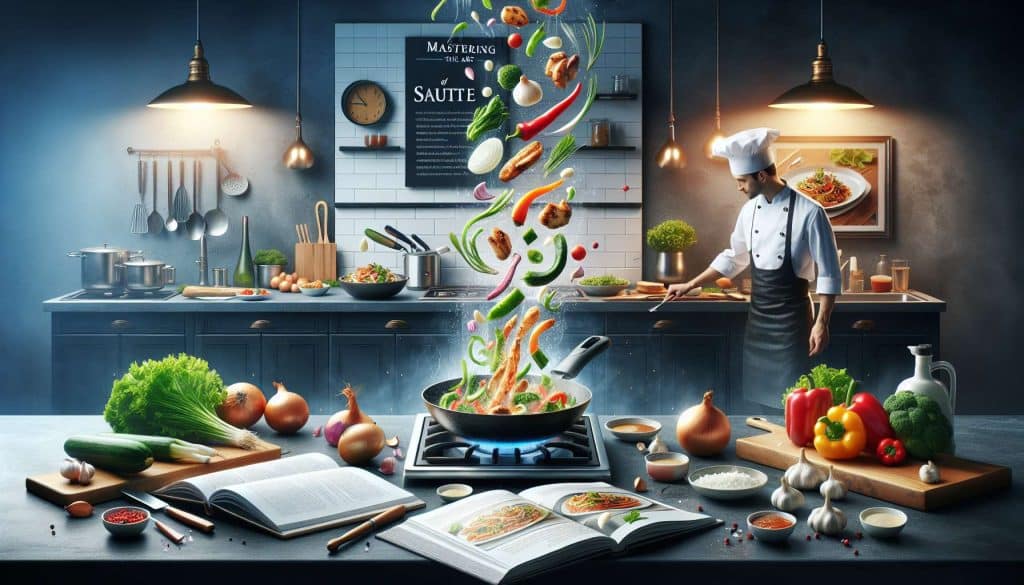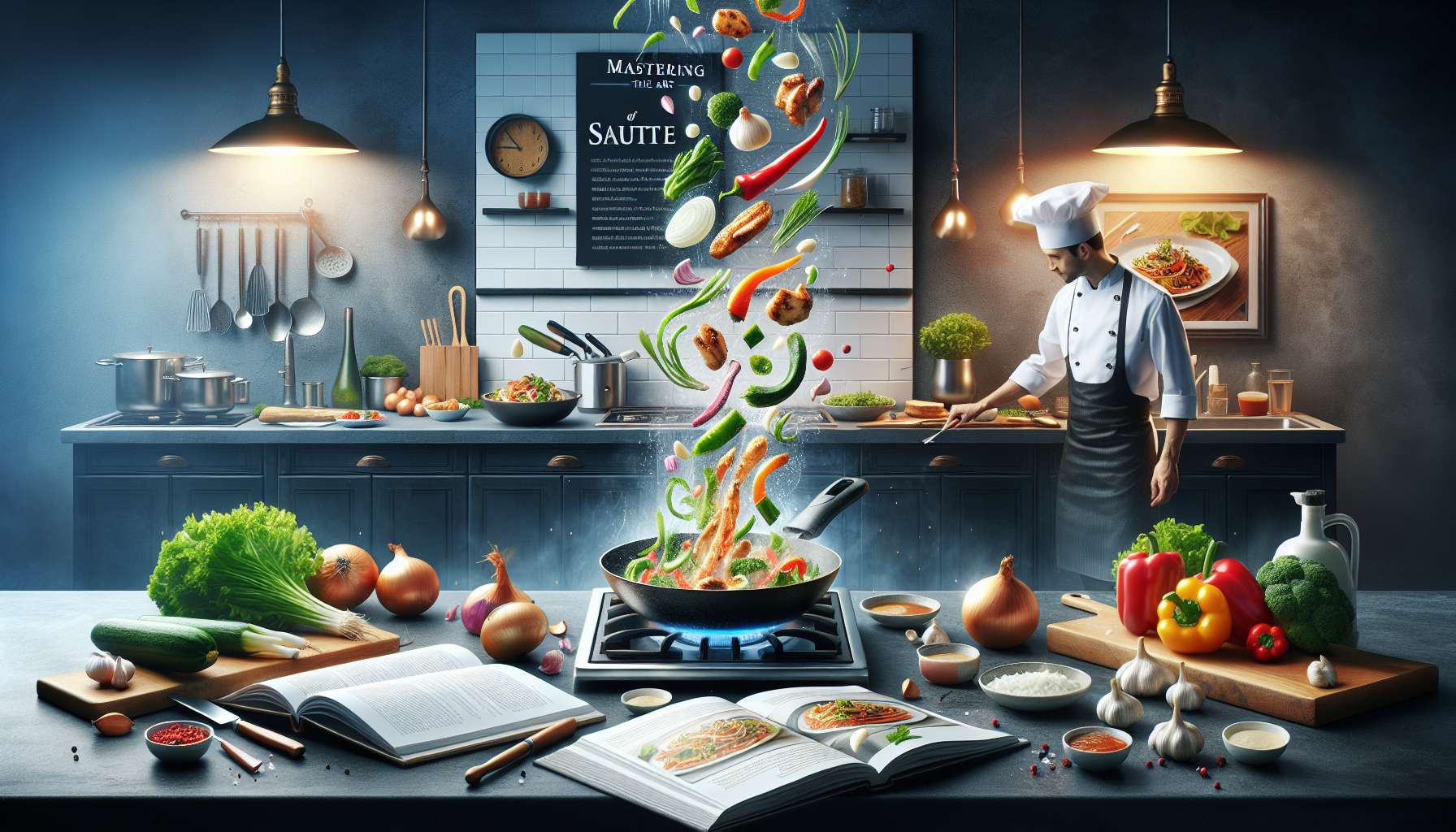Master the Art of Sautéing to Elevate Your Recipes into Culinary Masterpieces


Mastering the Art of Sautéing: A Beginner’s Guide to Flavorful Cooking
Anúncios
Have you ever watched a chef swiftly tossing ingredients in a pan, creating a symphony of aromas and colors, and wished you could do the same? This magical dance is called sautéing, a fundamental cooking technique that can transform your meals. Whether you’re a novice in the kitchen or a seasoned pro, mastering sautéing can elevate your dishes by adding depth and flavor effortlessly. Join us as we explore this essential culinary skill that will infuse your everyday meals with zest.
The art of sautéing goes beyond merely adding food to a hot pan. It’s about precision, timing, and the delicate balance of heat and ingredients. Originating from the French word “sauter,” meaning “to jump,” this method involves quick cooking over high heat. The thrill of watching ingredients sizzle and jump as they caramelize is a satisfying experience, making it a staple technique in kitchens around the world. Whether you’re cooking vegetables, meats, or seafood, sautéing can make ordinary dishes extraordinary.
At its core, sautéing is efficient, highlighting the natural flavors of ingredients without overcomplicating them with too much oil or heavy sauces. This technique not only preserves the nutritional value of your food but also makes the cooking process faster and more enjoyable. Imagine preparing a delicious meal more quickly than a scroll through your social media feed! The secret of sautéing lies in its simplicity, yet the results are undeniably impressive, even for weeknight dinners.
Anúncios
Unlocking Sautéing: A Quick Guide
Sautéing is all about understanding the right tools and techniques. A heavy-bottomed skillet or sauté pan is essential, ensuring even heat distribution, which reduces the risk of burning your food. Opt for pans made from stainless steel, aluminum, or cast iron. These materials are revered for their capability to achieve the perfect golden sear that sautéing requires, adding texture and flavor to your dishes.
The heat level is another vital component. High heat is key to sautéing, helping ingredients caramelize quickly without overcooking. Preheat your pan thoroughly before adding any food, ensuring it is warm enough to encourage the characteristic sizzle. Once heated, introduce the right fats. Oils with high smoke points, such as canola or grapeseed oil, are ideal. Combining butter with oil allows for a flavorful touch without the risk of burning.
Preparation is equally important. Slice your ingredients uniformly for even cooking. Vegetables, proteins, or seafood should be patted dry before hitting the pan, as excess moisture can impede caramelization. The actual act of sautéing involves constant motion—keeping the ingredients moving prevents sticking and allows for uniform cooking. Add seasonings like salt and pepper midway through, giving them time to integrate into your dish.
Anúncios
The Essential Traits of Sautéing
- Even Heat Distribution: Use a heavy-bottomed pan for consistent cooking.
- The Right Fats: Opt for oils with high smoke points for a successful sauté.
- Constant Motion: Keep ingredients moving for even cooking and flavor integration.
The Benefits of Sautéing
Sautéing offers a range of benefits, making it a go-to technique for many cooks. First and foremost, it is a speedy cooking method, perfect for those with a busy schedule who still want to enjoy a flavorful homemade meal. By cooking quickly at high heat, sautéing retains the vibrant colors and crunch of vegetables, making your plate as appealing to the eyes as it is to the palate. Additionally, it allows for a great deal of culinary creativity.
This technique enables you to experiment with a wide variety of flavor profiles. For instance, you can easily infuse dishes with Mediterranean essence using olive oil and fresh herbs, or add Asian flair with sesame oil and soy sauce. Sautéing enhances the taste and texture of your ingredients without overpowering their natural qualities. Moreover, the reduced use of oils compared to other cooking methods keeps dishes both healthy and delicious.
Another advantage is the preservation of nutrients. Since sautéing is a quick cooking process, it minimizes the loss of vitamins and minerals that can occur with longer cooking times. You’ll enjoy fresher, more nutritious meals as a result. Furthermore, sautéing is incredibly versatile, applicable to an assortment of ingredients—from delicate greens to hearty meats, all with satisfying results.
Understanding the common pitfalls is just as important as mastering the basics. For example, avoiding overcrowding is crucial, as it prevents steaming instead of sautéing. Properly seasoning as you go boosts flavor, while finishing with a flourish of herbs or a squeeze of lemon brightens and elevates your dish just before serving. The key lies in the balance of ingredients, timing, and a bit of creativity.
- Speed and Efficiency: Cook meals quickly and maintain vibrant textures.
- Diverse Flavor Profiles: Experiment with different oils and spices for unique dishes.
- Nutrient Preservation: Quickly cooked foods maintain more vitamins and minerals.





